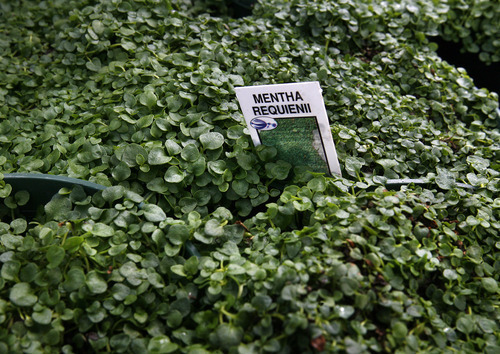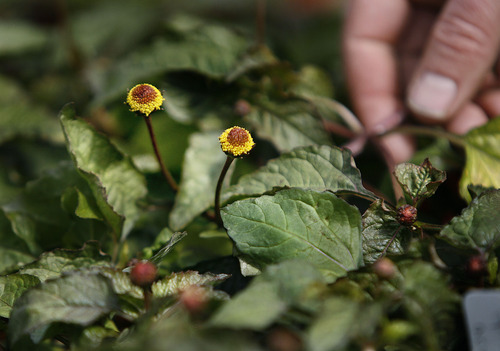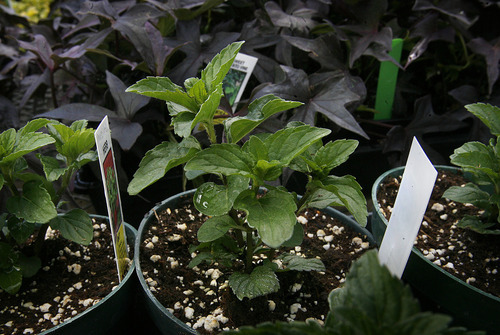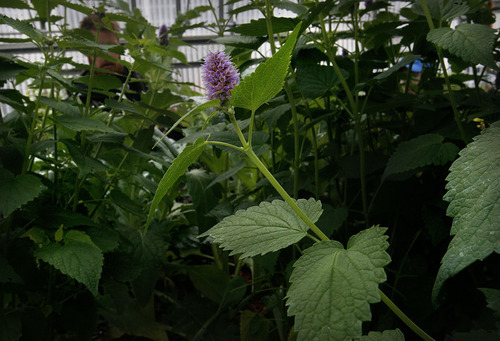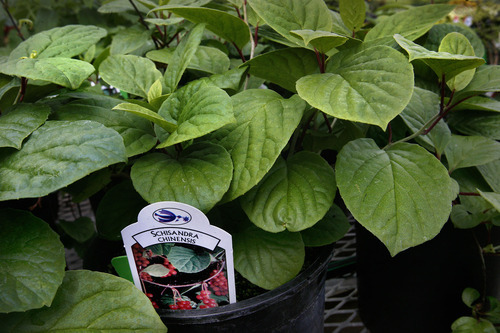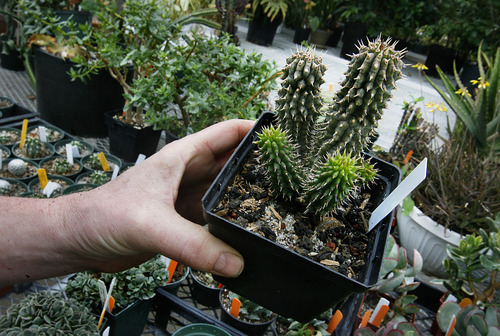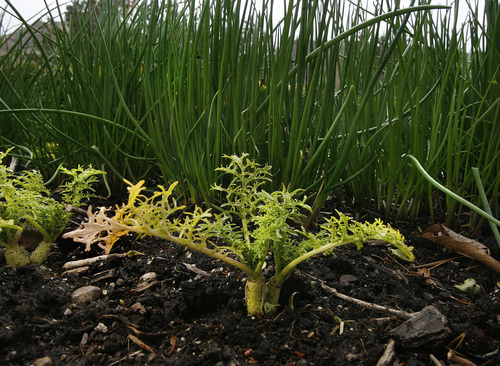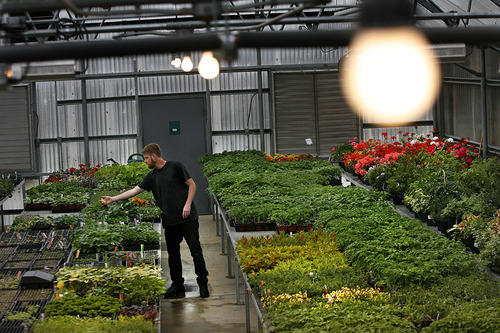This is an archived article that was published on sltrib.com in 2011, and information in the article may be outdated. It is provided only for personal research purposes and may not be reprinted.
Most people can't tell the difference between a ginseng plant and a weed.
And that's exactly what Fritz Kollman loves about his job at Red Butte Garden. The horticulturist not only grows a wide variety of herbs, but also educates people about the plants and their different uses.
"There's so much to learn, you can never know everything about it," said Kollman, who has been at Red Butte for more than four years. "I want to show people that not all herb gardening is boring."
Kollman, 36, is the lead herb gardener for the property, responsible for selecting and growing the plants that are used in the terraced herb beds in the botanical garden near the University of Utah campus. But he and his co-workers also have been busy growing vegetables and herbs seedlings for the Garden's annual plant sale, which takes place this Saturday just in time for Mother's Day planting.
Customers can buy ordinary garden seedlings such as bell peppers, basil, chives, tomatoes, cucumbers, zucchini and broccoli. But there also are rare plants, such as Mojito mint and the schisandra chinensis or "Five Flavor Vine," which produces hanging fruit that is commonly dried and said to reduce stress. That's possibly one of the reasons it sells out each year, Kollman said.
While some of these plants may sound intimidating to grow, they are not.
"We try to select stuff that will grow in Utah gardens, nothing too high maintenance," said Kollman, who will be at the plant sale to answer questions.
Some of the plants, which are being kept warm and happy in the greenhouse until the sale, will be saved for the herb beds near the entrance of Red Butte. Guests will see familiar plants such as chives, ramps and rhubarb. Kollman also regularly cares for an educational bed where he grows uncommon plants that will pique the public's interest.
There is, for example, ginseng to show people what the plant — used in vitamin supplements and teas — looks like in its natural form.
Kollman's educational garden also features plants that have ancient medicinal properties such as the Juniper shrub, which was crushed and used to aid digestion. The spilanthes herb with its small bulbous flowers — affectionately dubbed "The Eye-Ball Plant" by young visitors — gives a tingly, numbing sensation after chewing. Before modern dentistry, spilanthes was used for toothaches, Kollman said. Today, small amounts can also be used in salads for a little zest.
"It's an amazing feeling to know these plants have a long history of human use," he said.
Kollman got his start by working as a landscaper while attending college in Wisconsin. While earning his degree in biology, he grew his own garden as a hobby, and his natural curiosity about plants developed into a deeper passion.
"What first attracted me to herbs was their usefulness," Kollman said. "I would read field guides for fun, and I liked the idea that through knowledge and caring for your surroundings you can take care of yourself."
That is the basic idea behind all gardening, said Dana Frame, a horticulturist who works with Kollman.
"When you grow something and then eat it for dinner, you get a connection [with nature]," he said. "You have more of an appreciation for the process it took to turn a little seed into a squash."
Robert Sumsion, a Red Butte gardener and ginko tree enthusiast, agrees.
"We will only care for what we love, own what we understand and understand what we are taught," he said.
Kollman's living work embodies just that. His new goal is to experiment with different plants to see what he can grow. His latest project is a Tibetan Lily which can grow 10-12 feet tall with white, fragrant flowers at the top.
"It's challenging to grow, because they're usually found in moist forests," Kollman said. "But working [at Red Butte] allows me access to different opportunities and funds I'd never have if I were growing on my own. It's kind of the fulfilment of a dream of mine. I get to pursue a career that is also a hobby and a passion."
agreenleigh@sltrib.com Red Butte Garden
When • Saturday, May 7, 9 a.m.-3 p.m.; members-only sale May 6, 1-8 p.m. (memberships available at the gate)
Where • 300 Wakara Way, University of Utah campus, Salt Lake City
Info • Herbs, edible fruits, vegetables, flowering annuals, groundcovers, waterwise, ornamental grasses, perennials, roses, trees and shrubs, vines and cacti will be available; http://www.redbuttegarden.org.
Wasatch Community Gardens
When • Saturday, May 7, 8 a.m.-1 p.m.
Where • Rowland Hall, 720 S. Guardsman Way (1580 East), Salt Lake City
Info • Bring someone who has never been to the Plant Sale before and both of you will get a free 2-inch vegetable, fruit or herb seedling. There will also be vendors from the farmers market, as well as 50 varieties of heirloom tomatoes. Call 801-359-2658 or visit wasatchgardens.org.
Mother's Day Garden Fair
When • Saturday, May 7, 9 a.m.-4 p.m.
Where • Conservation Garden Park, 8215 S. 1300 West, West Jordan
Info • Free. Activities on water conversation, kid garden projects and live entertainment by Peter Brienholt and Sarah Sample; http://www.conservationgardenpark.org.
Kenyon Organics
When • Saturday, May 7, 8 a.m.-1 p.m.
Where • First Baptist Church, 800 S. 1300 East, Salt Lake City
Info • Heirloom plant sale with over 80 varieties of tomatoes; kenyonorganics.blogspot.com.
Heirloom Plant Sale
When • May 14, 8 a.m.-1 p.m.
Where • Viking Cooking School, 2233 S. 300 East, Salt Lake City
Info • kenyonorganics.blogspot.com
People's Market Seedling Swap and Sale
When • May 14, 10 a.m.-1 p.m.
Where • Jordon River Park Back Bowry, 1060 S. 900 West, Salt Lake City
Info • Trade or sell your greenhouse plants with local gardeners and farmers.


